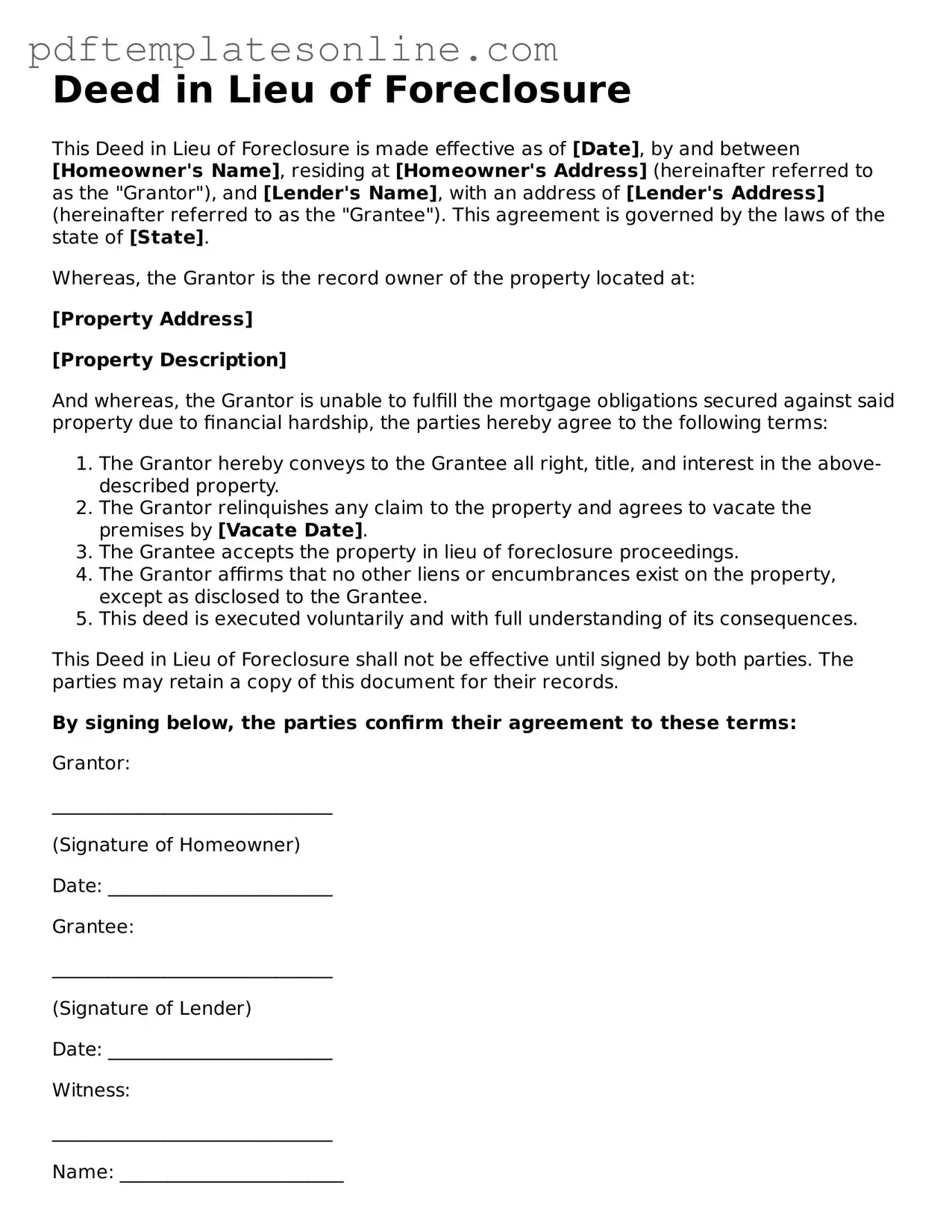Filling out a Deed in Lieu of Foreclosure form can be a daunting task, and many people make common mistakes that can complicate the process. One frequent error is failing to provide accurate property information. This includes the address, legal description, and other identifying details. Inaccuracies can lead to delays or even rejection of the deed.
Another common mistake involves not fully understanding the implications of signing the deed. Many individuals do not realize that by signing this document, they are voluntarily giving up their rights to the property. This can lead to regret if they later wish to contest the decision or reclaim the property.
People often overlook the importance of obtaining the lender's approval before submitting the deed. Not securing this approval can result in the lender refusing to accept the deed, thereby prolonging the foreclosure process. It is crucial to communicate with the lender and ensure all necessary steps are taken beforehand.
In addition, some individuals neglect to consult with a legal professional. While the form may seem straightforward, legal nuances can significantly impact the outcome. Seeking advice from an attorney can help avoid pitfalls and ensure that all aspects of the deed are properly addressed.
Another mistake involves not considering tax implications. Individuals may not realize that a Deed in Lieu of Foreclosure can have tax consequences, such as potential liability for canceled debt income. Understanding these implications can help in making informed decisions.
Lastly, failing to keep copies of all submitted documents is a common oversight. Having a record of what was submitted can be invaluable in case any disputes arise later. Documentation serves as proof of the transaction and can help clarify any misunderstandings with the lender.
